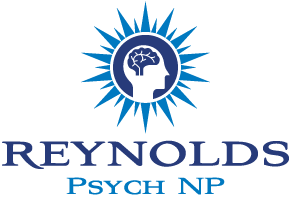A Powerful Tool for Managing Anxiety, Depression, and More
Cognitive Behavioral Therapy (CBT) has become one of the most widely recognized and effective treatments for managing various mental health conditions, including anxiety, depression, and stress. This evidence-based therapeutic approach focuses on identifying and changing negative thought patterns and behaviors that contribute to emotional distress. By helping individuals recognize unhelpful thinking patterns and providing tools to replace them with healthier thoughts and coping strategies, CBT can significantly improve emotional well-being and overall quality of life.
What is CBT?
CBT is a structured, short-term therapy that emphasizes the relationship between thoughts, feelings, and behaviors. The central idea is that our thoughts—whether positive or negative—play a crucial role in determining how we feel and behave. For instance, someone who constantly thinks, “I’m not good enough,” might feel worthless and engage in avoidance behaviors, like withdrawing from social situations or not pursuing opportunities. CBT helps individuals identify these patterns and replace them with more realistic, balanced thoughts.
Through guided discussions with a trained therapist, CBT encourages self-reflection, self-awareness, and problem-solving. Rather than focusing solely on past issues, CBT looks at how current thoughts and behaviors contribute to emotional struggles, offering practical techniques to make positive changes in the present.
How CBT Works for Anxiety and Depression
Anxiety and depression are two of the most common conditions treated with CBT. Both are often rooted in distorted thinking patterns, which can intensify emotional distress.
Managing Anxiety with CBT: Anxiety often involves excessive worry, fear, and anticipation of negative events that may never occur. In CBT, individuals learn to challenge these irrational thoughts by evaluating the evidence for and against their worries. For example, someone who feels anxious about a presentation may learn to recognize their fear of failure and replace it with thoughts like, “I have prepared well, and I can handle this.” CBT also teaches relaxation techniques, such as deep breathing and mindfulness, to help manage physical symptoms of anxiety, such as racing heart rates and shallow breathing.
Managing Depression with CBT: Depression frequently involves negative thought patterns that reinforce feelings of hopelessness, worthlessness, and helplessness. Individuals may feel like nothing will ever improve, and this mindset can lead to withdrawal, decreased motivation, and worsening depression. CBT helps patients challenge these negative thoughts and replace them with more constructive perspectives. For example, instead of thinking “I’m a failure,” individuals might reframe their thinking to “I may have faced setbacks, but I have also succeeded in many areas of my life.” Through this process, CBT helps reduce feelings of despair and increases motivation to take positive actions.
Benefits Beyond Anxiety and Depression
While CBT is commonly used to treat anxiety and depression, it has proven effective in managing a range of other mental health conditions, such as:
- Obsessive-Compulsive Disorder (OCD): CBT helps individuals challenge obsessive thoughts and reduce compulsive behaviors by gradually confronting feared situations and reducing avoidance.
- Post-Traumatic Stress Disorder (PTSD): CBT helps individuals process traumatic memories and reframe negative beliefs related to the trauma.
- Eating Disorders: CBT is used to address the underlying thoughts and behaviors that contribute to disordered eating patterns, promoting healthier relationships with food.
- Chronic Pain and Illness: CBT helps individuals manage the emotional challenges of living with chronic health conditions by changing the way they think about pain and their ability to cope with it.
The CBT Process
The process of CBT typically involves several key stages. Initially, the therapist works with the patient to identify the specific issues they are facing. Then, together, they explore the negative thought patterns and behaviors that may be contributing to the problem. Through various techniques, such as cognitive restructuring and behavioral experiments, patients learn to challenge and change these patterns. CBT often includes homework assignments, encouraging patients to apply what they’ve learned in real-life situations between sessions.
Takeaway
Cognitive Behavioral Therapy is a powerful tool for managing anxiety, depression, and many other mental health challenges. By teaching individuals how to identify and change negative thought patterns, CBT empowers them to take control of their mental health and make lasting, positive changes. Whether used alone or in conjunction with other treatments, CBT can help individuals lead more fulfilling, emotionally balanced lives. If you’re struggling with anxiety, depression, or any other mental health condition, consider reaching out to a mental health professional who specializes in CBT to begin your journey toward healing.







